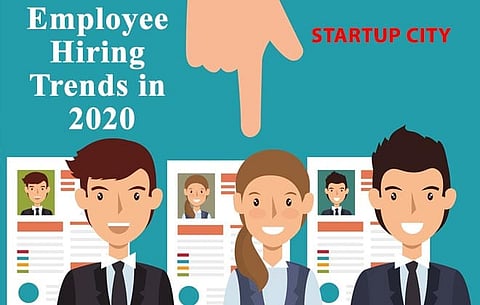

Welcome to 2020, it's a new year, and it is an amazing moment to take a closer look at what recruitment trends the industry will embrace this decade. Recruitment technology and the marketplace continue to evolve, as does the nature of work itself.
With the anticipation of not only a new year but a new decade, the most strategic of companies are looking for newer ways to remain competitive in an ever-advancing workforce.
To hire talent and skill that can make a difference, employers will have to brand themselves to the talent pool, look hard for mediums to access this intelligence, nurture the strategic relationship with lost candidates, and woo them back carefully into the fold.
Contingent and agile workforces are different; the contingent workforce model is one where temporary or project workers are brought into specific roles and projects to augment an organization's existing workforce when needed.
While an agile workforce is one, which is focused on highly skilled workers with incredible specialist skills, brought in when needed from inside or outside of the organization.
Unlike earlier, a recruiter's work will not be limited just to finding a desirable candidate but will have to work to develop a relationship cycle for long-term engagement.
The human resource analytics tools rooted in AI and MI will support recruiters in better workforce planning, skills gap analysis, retention, assessment, and database management.
This, in turn, will impact the quality of new employees and also the cost and time spent in the hiring process. Automation of the ex-employee verification process will help companies in saving time and resources and also will generate insights on attrition trends for better retention practices.
The significance of social media for professional purposes is great. First, LinkedIn, an employment-oriented service and social platform that operates via websites and mobile apps, and how has flourished into a leading reference point for job seekers as well as recruiters.
However, other social media sites such as WhatsApp, Twitter, and Facebook are excellent platforms to collect data about candidates and recruiters have used these in the past to do the same.
The end-to-end automation of the recruitment process- from hiring to verification to boarding- will catch up with employers so that all actions related to hiring are defined, allocated, and completed in time to bring all stakeholders covered in the hiring process on the same page.
Digital onboarding will also support organizations to attract and retain Gen Z talent by providing seamless loading and onboarding experiences that engaged them in ways they comprehend and appreciate.
Arising concern worldwide, data protection and privacy norms will be impacting organizations hiring policies. With impending changes in regulations, be it GDPR or India's own personal data and privacy bill, employers will have to assess and redefine hiring practices and processes to stay compliant.
Competition to lure talent is rising and this places candidates in a unique position in the equation where they select the employer as much as the employer selects them.
In the coming generation, employer branding will be focused to attract and nurture talented workforce who are the best fit for the organization.
Data-based targeting and retargeting of specific talent and employer branding initiatives will get important to create consideration, interest, and awareness.
This year, some recruitment trends are focused solely on the end user. One of the major difficulties, employers suffer from is the rapid changes in tech that have taken place over the last decade.
The hype fatigue that comes with sorting through all the bells and whistles of advanced technology to find what is important and value-adding.
Tech companies will evolve in the coming days to better serve and communicate with employers, to develop their tech user-friendly, and to keep systems easy to implement.
As recruitment tech continues to evolve, we will see an enhanced movement toward employers picking and selecting tech based on their technical requirement needs instead of implementing one system, which serves as a one-size-fits-all model.
While a one-stop solution may be desirable for both tech companies and employers, the technologies available have changed so rapidly in the last few that that picking and selecting the best items in the tech stack.
It will be the best practice for recruitment and will provide employers the chance to personalize their tech based on what they truly require.
Revising your hiring strategies for 2020 according to the current trends will help you develop a more efficient recruitment process and find the right candidates fit.